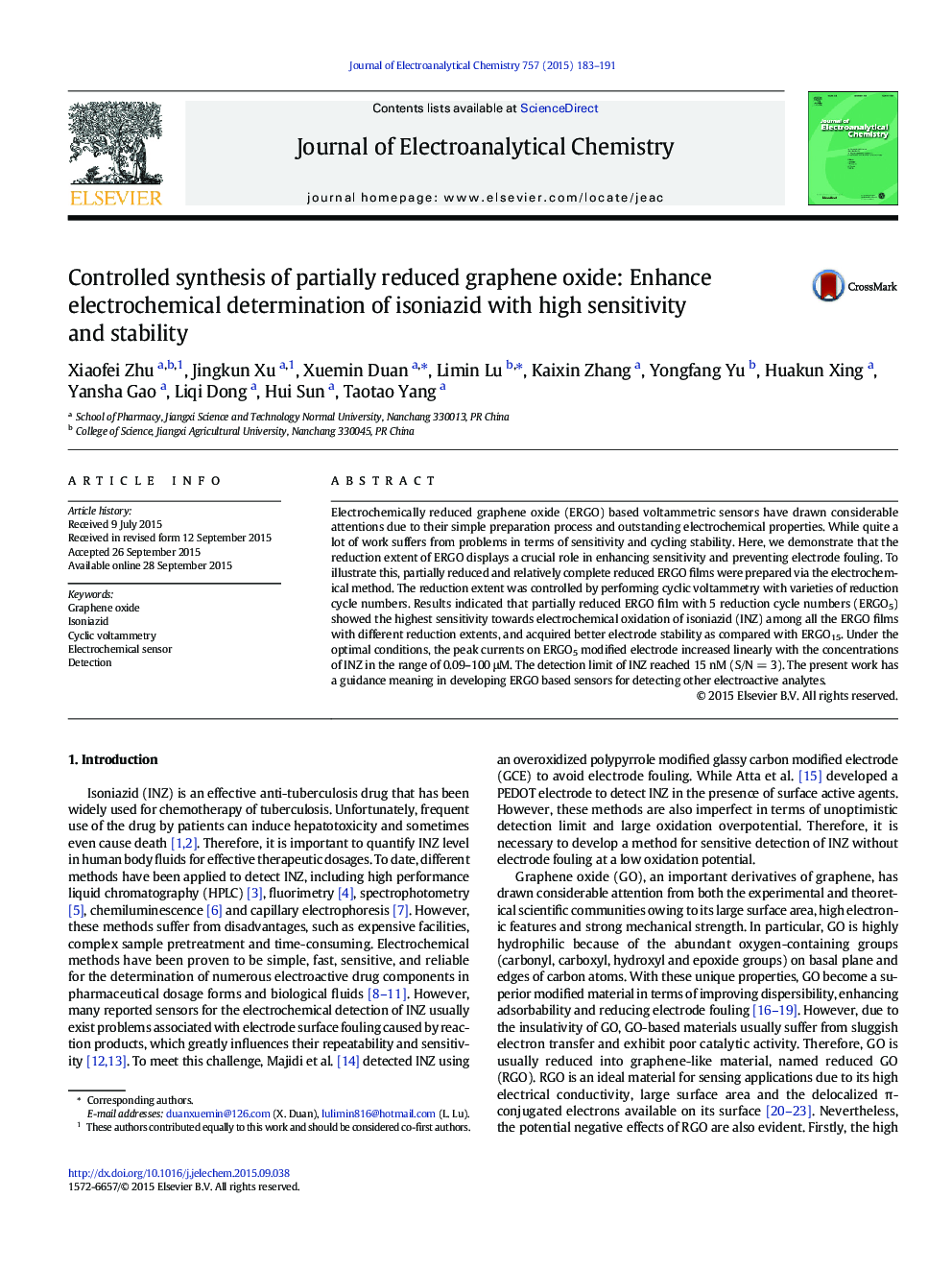| Article ID | Journal | Published Year | Pages | File Type |
|---|---|---|---|---|
| 218219 | Journal of Electroanalytical Chemistry | 2015 | 9 Pages |
•pERGO films were successfully prepared with controllable reduction extent.•pERGO/GCE can be used for the detection of INZ with high sensitivity and stability.•Low detection limit with wide linear range could be obtained.•The method was successfully applied to determine INZ in real samples.
Electrochemically reduced graphene oxide (ERGO) based voltammetric sensors have drawn considerable attentions due to their simple preparation process and outstanding electrochemical properties. While quite a lot of work suffers from problems in terms of sensitivity and cycling stability. Here, we demonstrate that the reduction extent of ERGO displays a crucial role in enhancing sensitivity and preventing electrode fouling. To illustrate this, partially reduced and relatively complete reduced ERGO films were prepared via the electrochemical method. The reduction extent was controlled by performing cyclic voltammetry with varieties of reduction cycle numbers. Results indicated that partially reduced ERGO film with 5 reduction cycle numbers (ERGO5) showed the highest sensitivity towards electrochemical oxidation of isoniazid (INZ) among all the ERGO films with different reduction extents, and acquired better electrode stability as compared with ERGO15. Under the optimal conditions, the peak currents on ERGO5 modified electrode increased linearly with the concentrations of INZ in the range of 0.09–100 μM. The detection limit of INZ reached 15 nM (S/N = 3). The present work has a guidance meaning in developing ERGO based sensors for detecting other electroactive analytes.
